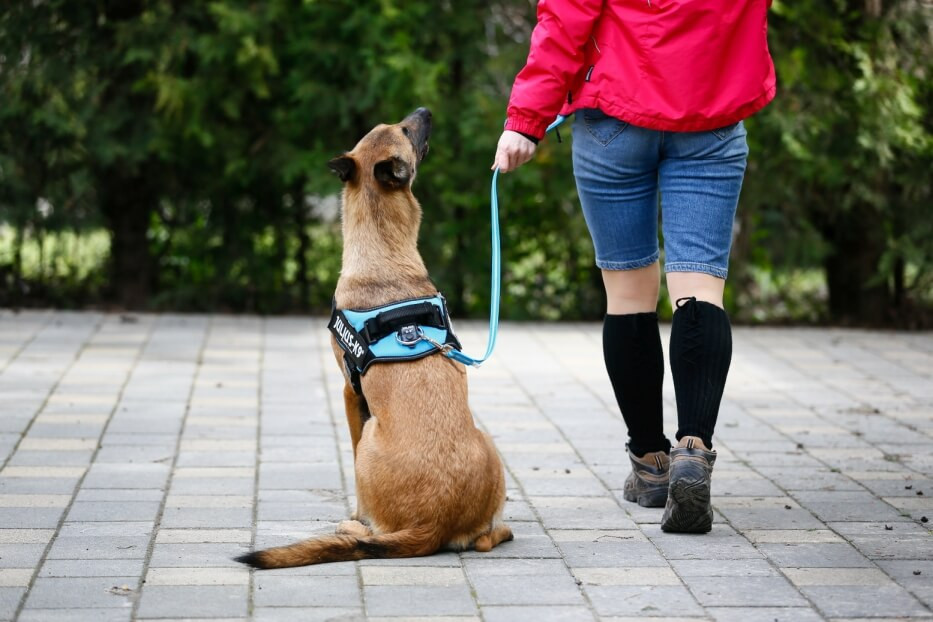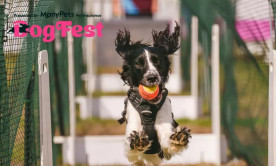Walking can be an overly exciting activity for some dogs and cause them to leap and pull while on a lead. Some owners think this unavoidable, but with dedicated training even the most hyperactive dog can be taught to walk without pulling on the lead.
This training can be difficult. Teaching your dog not to pull requires a lot of patience and can take weeks or months, and the longer you leave it the harder it is to train leash pulling out of them. Despite these challenges it is a valuable lesson and improves the safety and comfort of your dog.
Before you start
- Firstly you need to make sure your dog actually likes walking on a lead. We cover a lot of these basics in our Leash Training Your Puppy article so be sure to give that a read first.
- If you are using a harness make sure your dog is used to wearing one. See our Training Your Dog To Wear A Harness guide for advice on how to do so.
- Before you start any new training exercise with an excitable dog it’s always a good idea to wear them out slightly. This will make them easier to control and more likely to follow your instructions.
- Treats, and lots of them. Make sure you have your dog’s favourite treat ready as you’ll need to reinforce positive behaviour with a reward.
- Pick a quiet location to walk for your earlier training sessions. Minimising the number of stimulants for the dog will make everything go smoother.
Training your dog to stop leash pulling
Leash discipline is important but time consuming. These tips might seem basic and when you don’t see quick results you may start to think your dog can’t be trained at all. But like all dog training, patience and consistency is key to getting results.
Step 1: Make sure your dog isn’t ignoring you
Before you begin your walk remain still and quiet while giving your dog the full length of the lead. When your dog is ignoring you, don’t move or engage them until they engage with you first. Once they give you attention, immediately reward them with a treat. This shows that you have the dog’s attention and that you’re in control.
Step 2: Keep them close
Start your walk and continually use praise and treats to keep your dog close to you. Only reward them when they are on a loose lead.
Step 3: Stop before your dog pulls
When you see your dog moving too far ahead of you, stop before the lead goes tight. Like in Step 1, remain still and quiet until your dog pays attention to you again. When they come closer to you, reward them with a treat and then continue your walk. It’s important to be consistent with this method. Repeat it every time your dog moves away from you and before the leash goes tight.
Step 4: never pull on the lead
If your dog does start pulling, then don’t pull the lead back to try and control them. Simply stop and remain silent like in Step 1 and wait for them to stop pulling. Once you have their attention, start your walk again.
Step 5: Practice makes perfect
Practice and patience is important when training dog’s not to pull, but don’t overdo your training sessions. Short and daily training sessions are better than long ones done only a few times a week.
Step 6: Toy discipline
Place your dog’s favourite toy while keeping them on leash to see how they react. If your dog pulls toward the toy then stop and repeat Step 1 and wait for them to return to you. Walk towards the toy on the loose lead and reward them with the toy for doing so without pulling.
Step 7: Ease your dog into more distracting environments
It’s recommended that you start your training sessions in quieter locations. When your dog has shown good progress you should slowly introduce them to busier places with more distractions which in the past would have caused them to pull. And this is where your patience might be tested. Just keep consistent with the training methods - stopping if your dog starts to walk too far away from you, and getting them to come back to you.
General tips
- Repetition is key to any dog training. Practice every day in short sessions and remain consistent with your training methods.
- Make training as fun as possible and always be encouraging to your dog. They will learn faster this way and this will only further develop your bond.
- Make sure your dog understands obedience commands like “stop”, “heel”, “come”, and “stay”. Training your dog to know these basic commands is responsible, keeps your dog and others safe, and aids all training.





